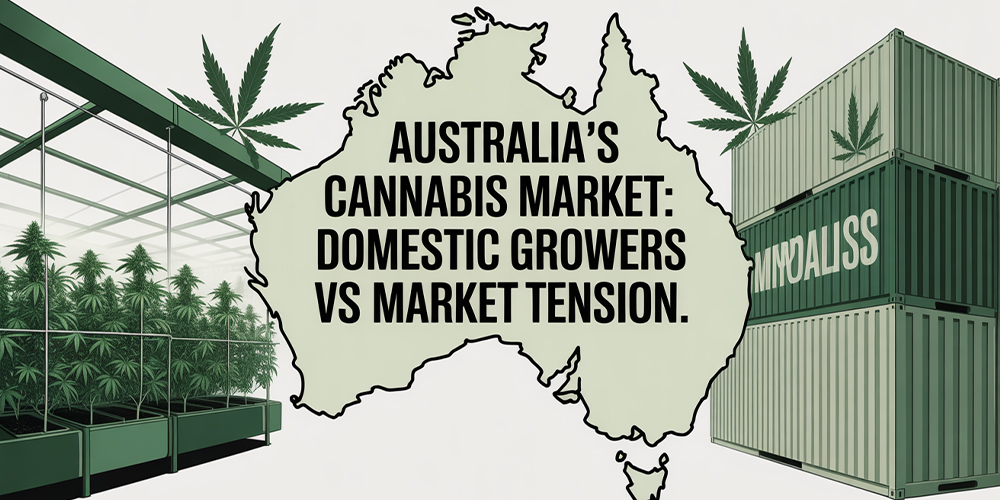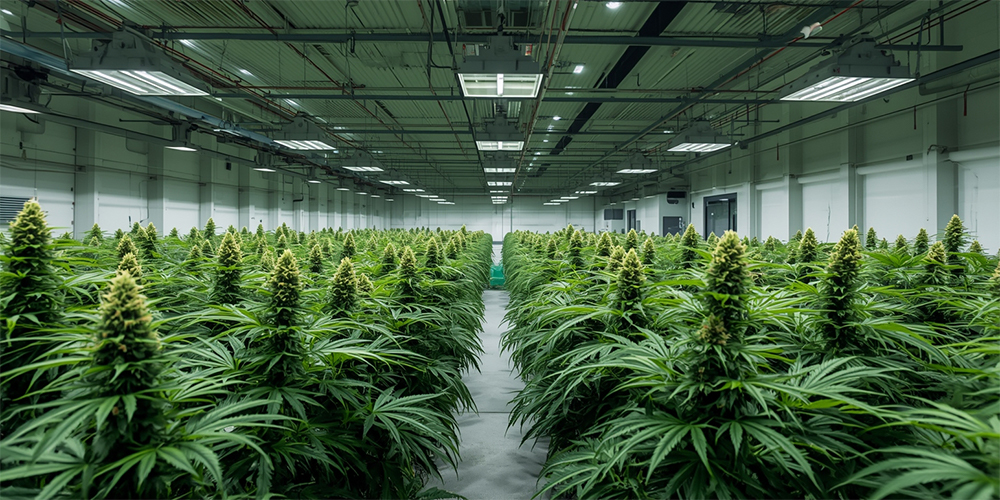
Home » Australia’s Cannabis Market at a Crossroads: Domestic Growers Fight Back Against Imports
Australia’s Cannabis Market at a Crossroads: Domestic Growers Fight Back Against Imports
Australia’s medicinal cannabis industry is reaching a tipping point as domestic growers raise alarms over increasing reliance on imported products. Despite years of investment, local cultivators say burdensome regulations, high compliance costs, and slow government approvals have left them at a disadvantage compared to international suppliers flooding the Australian market with cheaper, more accessible products.
Local Producers Under Pressure
The Australian Cannabis Cultivators Guild, which represents nearly 80% of domestic medicinal cannabis producers, has been vocal in warning that many growers may not survive under current conditions. According to the Guild, the federal regulatory environment has created an uneven playing field:
- Licensing delays: Cultivators report waiting up to two years for federal approvals, stalling expansion plans.
- Compliance costs: Maintaining strict security, cultivation, and Good Manufacturing Practice (GMP) standards often cost millions before a single plant reaches patients.
- Import dominance: More than half of medicinal cannabis prescribed in Australia is currently sourced from overseas, primarily from Canada, Europe, and South America.
Domestic growers argue that without urgent reform, Australia risks outsourcing its cannabis industry entirely, undermining job creation, regional development, and patient safety.

Imports Outpacing Local Cultivation
Australia legalized medicinal cannabis in 2016, and since then patient access has grown significantly — more than 300,000 approvals have been granted under the Special Access Scheme (SAS-B). But as demand surged, imports quickly filled the supply gap.

International producers, particularly Canadian companies, have capitalized on their economies of scale and surplus stock. Their products often reach Australian patients faster and at lower prices than local growers can match. Critics say this dynamic not only squeezes domestic cultivators but also leaves patients dependent on fluctuating global supply chains.
Industry Impact & Patient Concerns
The imbalance between imports and local production carries several implications:
- Economic loss: Billions in potential revenue and tax dollars could leave Australia if the market continues to rely on imports.
- Job creation stalled: Regional communities that invested in cannabis cultivation as a new agricultural opportunity may see projects shelved or abandoned.
- Quality & safety risks: While imported cannabis must meet Australian standards, local advocates argue domestic production allows for greater oversight and consistency.
- Patient pricing: Imports can drive down short-term costs but may create long-term instability if foreign supply chains are disrupted.

Calls for Policy Reform
Industry leaders are urging the Albanese government to overhaul cannabis regulations to better support domestic producers. Proposed reforms include:
- Streamlining licensing and approvals through the Office of Drug Control.
- Offering tax incentives and subsidies for local cultivation.
- Introducing “Australian-grown” labeling to help patients choose domestic products.
- Setting minimum local content requirements to ensure fair market access.
Advocates argue these measures are not about protectionism but about creating a sustainable, self-sufficient market. Without intervention, Australia may follow the path of countries that became overly reliant on imports, only to struggle with shortages and patient backlash later.
Looking Ahead
The debate over imports versus domestic cultivation comes as Australia continues to wrestle with broader cannabis reform. While the Greens’ federal legalization bill faces resistance, public support for cannabis access — both medicinal and recreational — is rising.
For domestic growers, the next 12 months will be critical. If regulations remain unchanged, many may not survive. But if policymakers seize the moment, Australia could build a thriving cannabis industry capable of serving patients at home and exporting premium products abroad.

